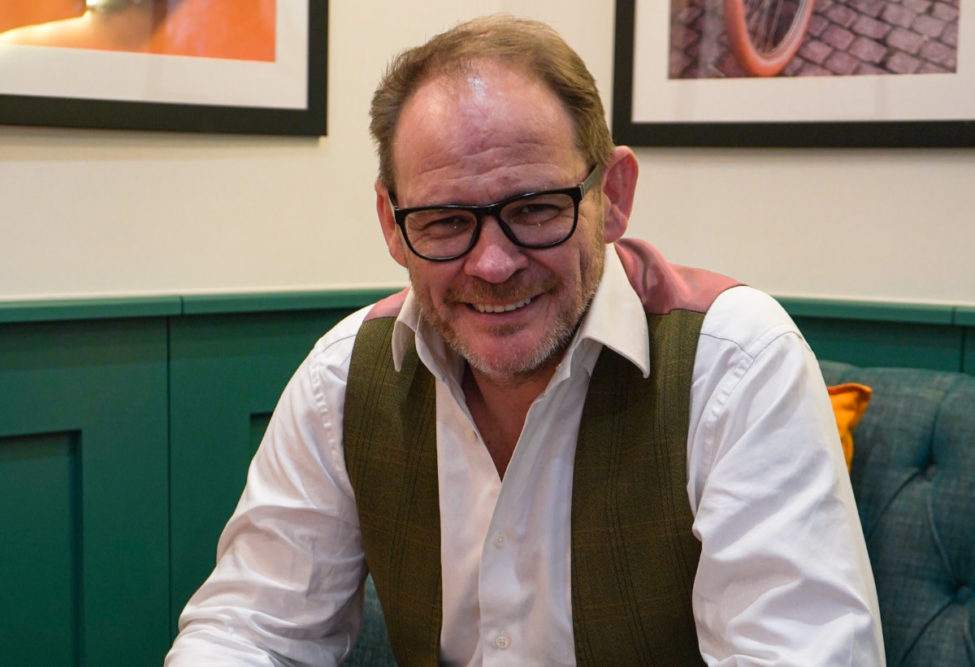Paul Baker, founder of St Pierre Bakery, speaks with Bake magazine, in advance of this year’s IBIE, to examine key strategies they are undertaking to build an even stronger business.
What technologies or advancements are being introduced to the industry now?
“One of the impacts of the pandemic was to speed up the digitalization of our industry. Especially for St Pierre, because we are America’s number one brioche brand, but we were operating from Manchester, UK and unable to travel for almost two years. Necessity is the mother of all invention, and we developed a number of new technologies to ensure that we sustained the growth of our brand and its presence in the US market.
How are these tools increasing productivity?
“Throughout 2021, we were steadily building a team on the ground in America. David Wagstaff, our VP in North America now has a team of 10 working across the United States – and all of them were hired remotely. Adapting technology at every level of our business made that possible, but we started using Microsoft Teams at the outbreak of the pandemic and it is now central to our operations. In fact, we have hired a developer in-house to ensure we are maximizing the potential of the program and its offerings.
What are the biggest concerns or challenges facing the industry right now?
“Hiring wasn’t the only way in which we adapted processes to digitalize them. We were presenting to retailers from Manchester, so using our in-house digital marketing expertise, we revolutionized the way we deliver sales presentations. Now, if we can’t meet in-person, we get as a close as we can to a face-to-face meeting. Instead of standard slides, we created animated, bespoke presentations, delivered in real-time to really bring the brand to life and keep our retailers engaged.
What are some key thoughts/strategies for improving or streamlining the distribution system?
“We also updated our forecasting systems during the pandemic, allowing us to see, with much greater accuracy than ever before, what stock was in which country, what was committed, what was in transit and where it needed to be. This upgrade to our forecasting systems is key to our three-year strategy, which is all about getting the right products, in the right place at the right time.
“Furthermore, our digitalization process is helping the industry. In 2021, we developed our Sales Enablement Platform, which is essentially an online hub for the trade. The hub was a significant investment for us, not just in terms of resource, but also because it offers total transparency with our retailers, brokers and distributors. As a brand, we invest heavily in category data to ensure that we are always ahead of the curve – but we share that insight widely and make it available for everyone to see. There are few suppliers who are happy to do this, but working collaboratively with our retail partners is one of the things that sets us apart as a supplier.
What are some key strategies and tactics to adapt?
“Despite the challenges of the pandemic, the St Pierre brand is going from strength-to-strength. We have recently opened our first US office, in Cincinnati and we are agreeing new distribution with retailers across America on our range of products. The brand value surpasses $100mn and US sales are up 10 per cent year on year – no mean feat given the uplift in sales caused by Covid-19 in 2020 left many suppliers struggling to maintain heady sales levels.
“St Pierre fill rates have not dropped below 94 percent in more than 3 years. We ended 2021 with an average fill rate of 96 percent – despite a volatile market and disrupted supply chain felt industry wide. Globally, the St Pierre brand grew by 17 percent in 2021 – and our agility in moving to and embracing new technologies is testament to that continued success.
What are some of the top variables looming on the horizon to get a handle on today?
“There are of course areas in which we will be looking to improve. We have big plans for our US trade hub, but it’s a brilliant starting point. Our UK equivalent was upgraded last year to enable retailers to place orders directly and the US version is constantly evolving.”
“What we mustn’t forget is that whilst businesses were adapting new technologies during the pandemic, so were consumers. The pandemic has fundamentally changed the way consumers engage with brands and these changes need to be front of mind as we move into ‘the new normal’. Direct to consumer sales and communications are more advanced than ever before but what’s key for brands is making sure they are present or the right audiences in relevant spaces. Social media and other digital channels give us the opportunity to talk to consumers, but that’s of no use if consumers don’t want to hear from us there.”




